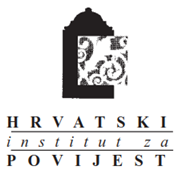POLITICAL CIRCUMSTANCES AND SECURITY SITUATION IN WESTERN SLAVONIA ON THE EVE OF THE GREATER-SERBIAN AGGRESSION IN 1991
DOI:
https://doi.org/10.22586/review.v18i1.24296Keywords:
Republic of Croatia, Homeland War, Serbian rebellion, Western Slavonia, disintegration of YugoslaviaAbstract
Based on archival sources and relevant literature, this paper portrays political circumstances and security situation in Western Slavonia from 1989, that is, from collapse of the communist systems in Europe and destabilisation of Yugoslavia by the political leadership of the Socialist Republic of Serbia, up until August 1991 when the overt Greater-Serbian Aggression started in Western Slavonia. Democratic processes in Europe also seized western Yugoslav republics, Slovenia and Croatia. These republics advocated either the restructure of Yugoslavia as a confederal state, or their independence in case that the political agreement with other republics about common state system was not feasible. Conversely, Serbian political leadership’s goal, supported by pro-Serbian oriented leadership of the federal Yugoslav People’s Army, was to impose Yugoslavia as a centralized state under the domination of Serbs, as the most numerous Yugoslav nation. After this policy failed, Serbian leadership attempted to create Greater Serbia which would comprise all territories which Serbian leadership considered as historically and ethnically a Serbian territory. Among others, that also included Western Slavonia where a certain part of population were ethnic Serbs. Part of these Serbs, as well as ethnic Serbs in certain other parts of Croatia, supported by Belgrade, gradually commenced rebellion against the Croatian authorities. Insurgency was led by representatives of Serbian Democratic Party whose centre was in town Knin. In the first phase of destabilisation the emphasis was on the thesis that the Serbs were endangered in Western Slavonia, in order to radicalize as many as possible, which was successfully implemented, and finally led to terrorist actions culminating with the open aggression in Western Slavonia.
Downloads
Published
How to Cite
Issue
Section
License
Copyright (c) 2022 Copyright holders are the publisher Croatian Institute of History and the authors.

This work is licensed under a Creative Commons Attribution-NonCommercial 4.0 International License.
The copyright holders are the Croatian Institute of History (as the publisher) and the authors.
The Review of Croatian History is an open-access journal. Its contents are freely accessible in their entirety. Users may read, download, copy, distribute, print, search, or put links to its material, and to change, reword, and process the material or use it in other legal ways, as long as they cite the original in the appropriate manner, in accordance with the Creative Commons licence CC BY-NC.
Works published in the Review of Croatian History may be deposited in institutional or thematic repositories, as long as the appropriate links to the web pages of the Journal and Hrčak (central portal of Croatian scientific journals) are made available.
The self-archiving policy is indexed in the Sherpa/RoMEO database, where it is visible that the journal allows the depositing of unreviewed (pre-print), reviewed (post-print), or publisher’s versions of the work.


